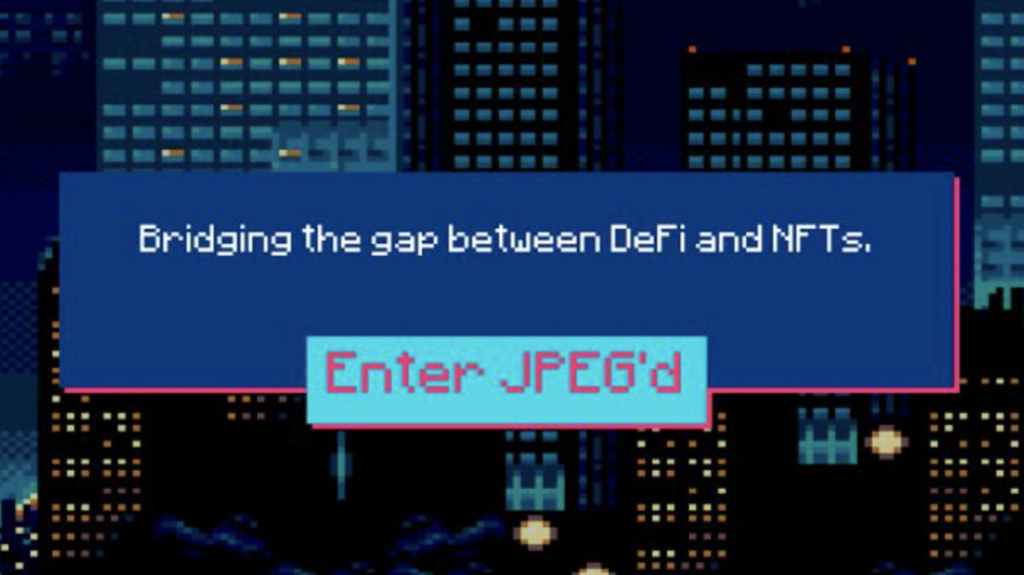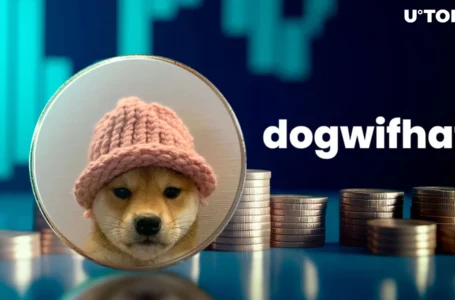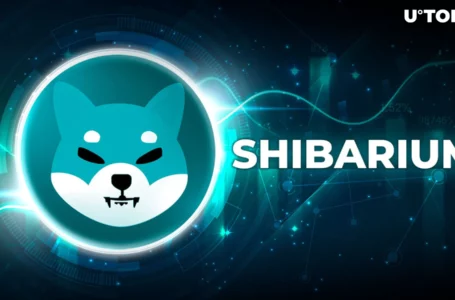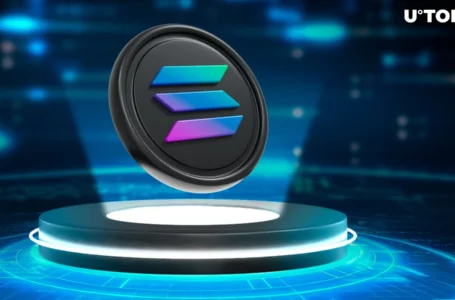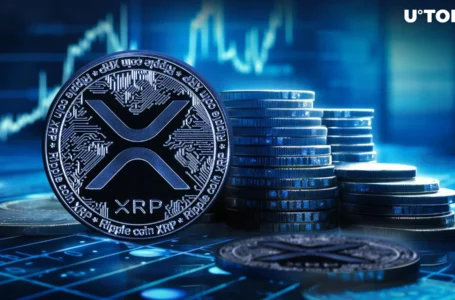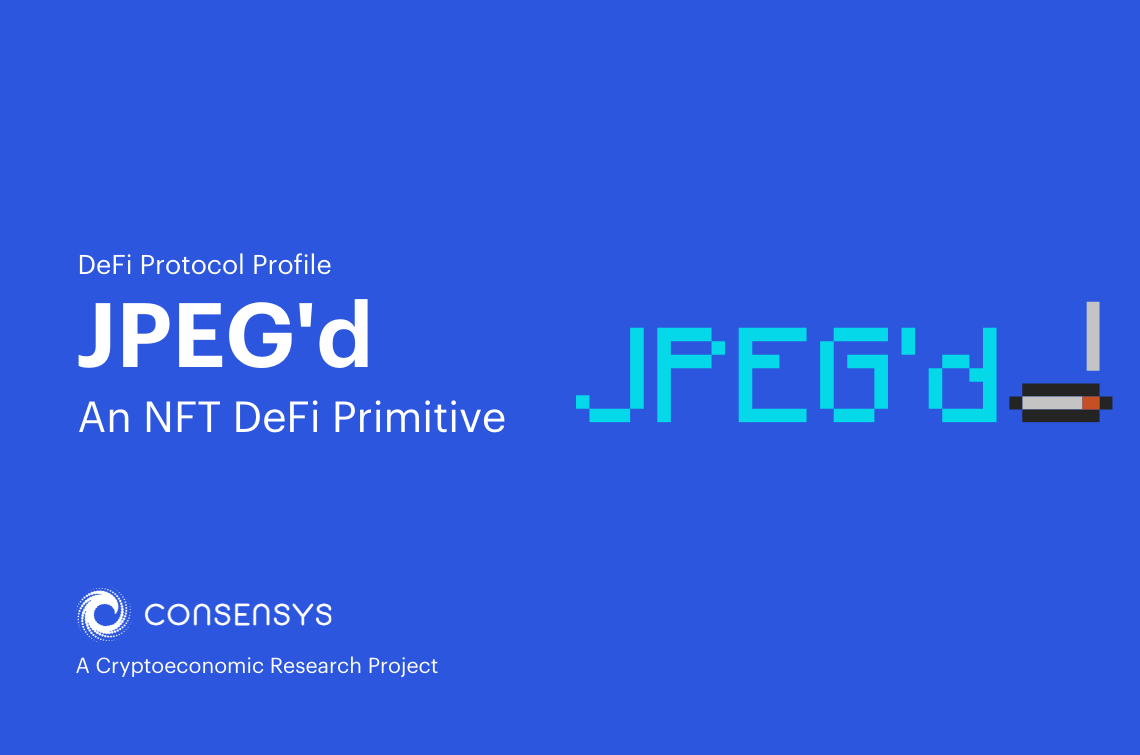
JPEG’d is a protocol based primarily on Ethereum which will allow NFT holders to open Collateral Debt Positions (CDP) to borrow funds (PUSD) through the use of NFT as a collateral challenge. JPEG’d is a decentralized and unregulated protocol, aiming to connect DeFi and NFT, thus increasing usage instances for NFT in the long term.
What is JPEG’d (JPEG)?
JPEG’d is a decentralized lending protocol on the Ethereum blockchain that allows holders of Tokens non-fungibles (NFTs) to open collateralized debt positions (CDPs) using their NFTs as collateral. Users mint PUSd – the protocol’s native stablecoin – allowing them to effectively gain leverage on their NFTs.
JPEG’d is completely permissionless, decentralized and not controlled by any central entity. The purpose of JPEG is to bridge the gap between DeFi and NFTs and eventually allow any NFT collections, voted on by the governance, to obtain a line of credit using their NFTs as collateral in the protocol.
Mechanism of action
Warranty
JPEG’d will help some NFT collections. At the time of the first launch, the venture supported collateral for Crypto Punk, which was later expanded to consist of EtherRock and Bored Ape Yacht Club. The proposal and approval of more collections will be via governance (by holders of JPEG tokens). The value of the NFT will be determined by the minimum value, but in some cases differentiated value NFTs may be valued individually (through the administration).
ZERO
JPEG’d commissions are of two types:
- Loan curiosity rate: 2% / 12 months.
- Loan disbursement charge: .five percent of disbursed volume. For example: Alice mortgages NFT, borrows ten,000 PUSD and withdraws the full volume => Alice has to spend a withdrawal fee of 0,5% or 50 PUSD.
LTV (loan/value ratio)
To ensure that the protocol works properly, JPEG’d defines the LTV for loans, which is understood as the relationship between loan and collateral value. Currently JPEG’d will allow end users to borrow up to 32% of the collateral value, the loan location will settle if LTV ratios > 33%.
- For example: Bob mortgages an NFT worth one hundred ETH => Bob can borrow up to 32 ETH. If the value of the NFT decreases or Bob borrows extra ETH, triggering that ratio to increase to >33%, the loan will pay off.
In addition, JPEG’d also has a higher loan disbursement restriction for some NFT collections. For example, with Crypto Punk, the borrowing restriction is PUSD ten million. If this limit is reached, end users will no longer be ready to lend. This constrained boost/reduction can be transformed through protocol administration.
insurance
As a remarkably volatile asset lending protocol, JPEG’d will allow end users to decide on insurance coverage for their loans.
- Specifically: Users can purchase insurance coverage for any loan place. Therefore, at the time of settlement, the consumer has the right to “redeem” his NFT from the DAO immediately after payment of the debt + paid the insurance coverage premium (calculated from 25% of the residual value of the debt at the time of payment ). and accumulated curiosity). The insurance coverage premium will be equal to 1% of the disbursed volume.
- Example: Bob mortgaged an NFT and borrowed ten,000 PUSD. Bob chooses to secure his seat on loan. So Bob has to spend one percent of ten,000, which is one hundred PUSD. Bob’s full volume paid immediately after deducting costs is PUSD 9850 (which includes 0,5% disbursement fee). So if the market is risky, the NFT will go down in value and Bob will be liquidated => Bob will have to pay 9850 PUSD + 25% x 9850 PUSD to the DAO and recover the NFT (assuming the loan is not affected). .
JPEG blocking mechanism
As I explained, the determination of the value of the NFT is primarily based on the protocol governance vote. In particular, the consumer may propose to increase the value of a given NFT. When the proposal is authorized, the consumer will have to block the JPEG at an amount equal to 25% of the largest loan volume calculated primarily based on the proposed NFT amount.
- For example: Alice proposes to increase her NFT to $200.000 => Alice will have to block an amount of JPEGs worth 200.000 x 32% x 25%.
Potential and Risks
Potential
NFT has recently had a definitely wonderful boom, providing huge returns for traders and becoming a major attraction of income movement. However, one of the downsides of NFT is its liquidity and restricted usage instances. Therefore, opening a platform that allows NFT guarantees is the way to add value to NFTs.JPEG’d is a state-of-the-art enterprise, so it will immediately connect with the main NFT tasks in the market, creating an aggressive benefit. In 2018 when AAVE was released and started to configure Defi, nobody believed it would be so successful, now JPEG’d can develop a related story. One of the notable factors of JPEG’d is that it is created and supported by a large market group: DCInvestor, Santiago Santos, DefiGod, Terranode…
Risco
First of all, as a company created in the NFT market, JPEG’d’s growth or failure depends very much on the condition in the NFT market. In fact, we are currently noticing the explosion of NFTs in late 2021 to early 2022, however this overheated boom is likely to lead to a deep correction in the short sentence, therefore rightly affecting the enterprise (secured NFTs will be withdrawn or liquidated when the value goes down…) From there, the growth of collateral will encounter several short-term and long-term dangers. Assessing the value of an NFT is not a simple process, especially when combining its value with its liquidity. Therefore, as JPEG’d expands its collateral types to increase the value of the protocol, a very cautious threat assessment is to be expected.
On the other hand, the tokenomic enterprise in my view is not that big. The 30% distribution for staff is very insignificant, the 30% for donation events is definitely unclear, let alone transparent. JPEG and PUSD never have many backlinks to increase the value of each other like other native token pairs – stablecoins. In the end, no matter the place, JPEG’d is sure to find plenty of long-term competitors. So if the lead is not grabbed and quickly produced in the market, JPEG’d can easily be overtaken by much better rivals.
JPEG Token
JPEG cryptocurrency has the total supply of 69.420.000.000 JPEG tokens.
JPEG can be used for:
- Staking: participate in governance + receive shared protocol revenue.
- Liquidity Mining: participate in providing liquidity.
- Blocking: when the proposal to increase the value of the NFT is approved.
- Reward: JPEG is also the project reward token.
JPEG’d Price Forecast (JPEG)
JPEG’d price is forecast to reach a maximum level of $0.00121 throughout 2022. As early as 2023 according to our crypto price prediction index, JPEG’d (JPEG) may reach a maximum level of $0.00233, with the average trading price of $0.00173. In 2025 according to our crypto price prediction index, in 2025 JPEG should cross an average price level of $0.00281. The minimum expected value of the JPEG’d price at the end of the current year should be $0.00259.
Additionally, JPEG can reach a maximum price level of $0.00286. JPEG’d price is predicted to reach the lowest possible level of $0.00249 in 2030. According to our crypto price prediction index, JPEG’s price could reach a maximum possible level of $0.00458, with the average price predicted of $0.00345.
Final Thought
The project concept is interesting, helping to diversify the use cases of current NFTs. However, the issue of NFT pricing is still very difficult and subjective according to community groups. Therefore, LTV allows a low level to avoid liquidation. We will also wait and see if the project can have new valuation methods in the future to improve current capital efficiency.
